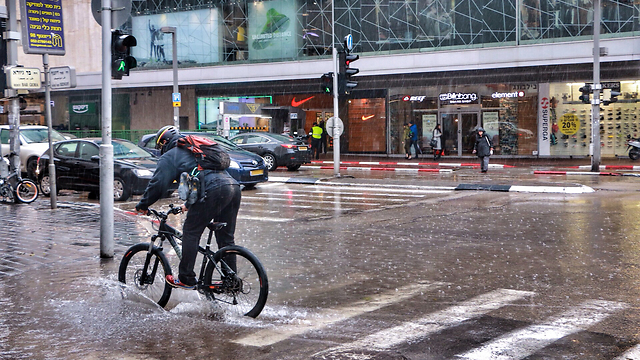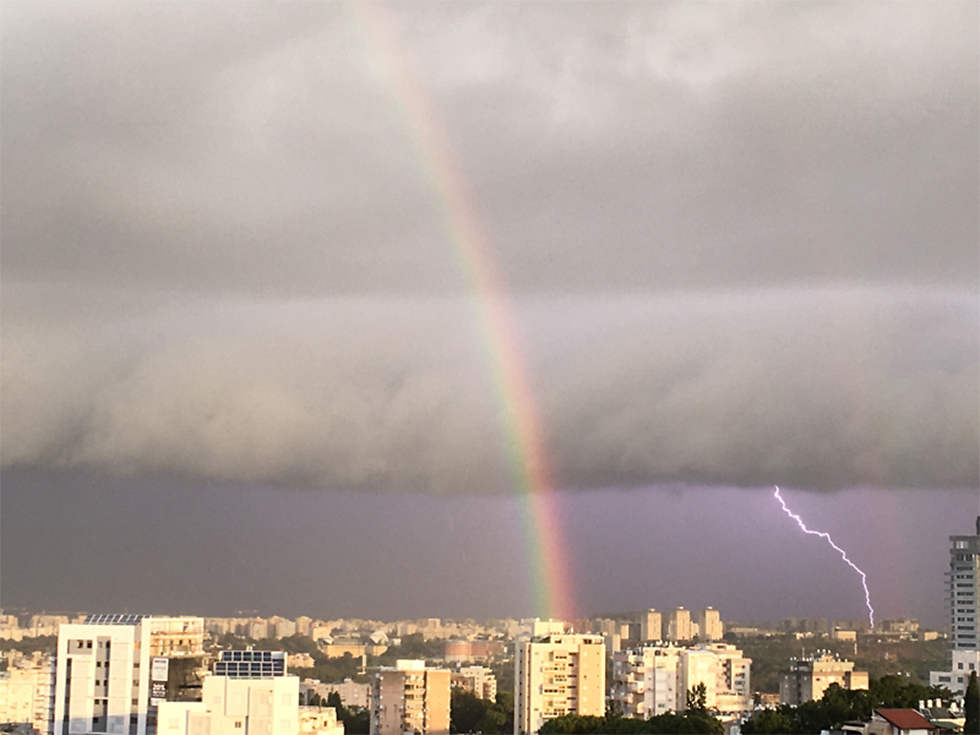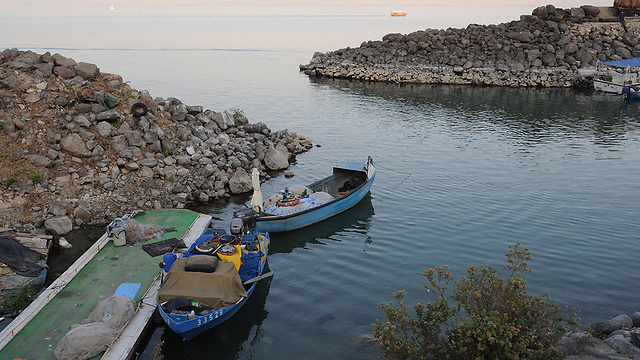
Rain in Netanya
צילום: עידו ארז
Rain is a good thing: Last month was the rainiest December since 1992
Mitzpe Harashim in the north saw 437mm of rain, while Kibbutz Ramat HaShofet had 430mm and Haifa registered 322mm of rain, but while the Kinneret's level rose 24cm throughout 2016, it's still nowhere near the Upper Red Line.
Last month was the rainiest December Israel has seen since 1992, data released by the Israel Meteorological Service on Sunday shows.
The increased rainfall in December offset the fairly dry November, leading to above-average rainfall levels in northern and central Israel.
December 2016 saw one significant rain spell at the beginning of the month. Then, starting the 12th and until the 31st, there was a long rain spell with short breaks.
Mitzpe Harashim, north of Karmiel, saw the most rainfall, with no less than 437mm of rain during the month. In second place comes Kibbutz Ramat HaShofet in the Menashe Heights that experienced 430mm of rain. In third place was Kibbutz Merom Golan in the Golan Heights, which had 364mm of rain. Other notable place are the settlement of Kedumim in the Samaria region, where 324mm of rain fell, Safed, where 313mm of rain fell, and Kibbutz Nahshonim, south of Rosh HaAin, which saw 301mm of rain.
Among the large cities, Haifa was in the lead with 322mm of rain, followed by HaKfar HaYarok near Tel Aviv, where 247mm were measured. Jerusalem saw 170mm of rain, while Be'er Sheva only had 33mm. The southernmost city of Eilat had the least amount of rain—2mm.
Since the beginning of the rainy season, Jerusalem saw 177mm of rain, Tel Aviv had 253mm, and Haifa had 344mm.
Northern Israel and the coastal plains saw rainfall that was about 10-40 percent above average for this time period. The central Israel mountains saw rainfall closer to the average, while the southern coastal plains had rainfall 20-30 percent below average. The northern Negev had 30-45 percent below average of rainfall, while the central Negev and south of it rainfall was close to the average.
December was also colder than average all across the country, and was the coldest since 1994. During the day, temperatures were lower by 2.5-3 degrees Celsius from the average in the northern mountains and valleys, and 2-2.5 degrees below average in the coastal plain, the Negev, and central Israel mountains. During the night, it was 1.5-2.5 degrees Celsius below average in the coastal plain and the northern valleys.
Moderate rise in Kinneret level
The Kinneret (Sea of Galilee), a major freshwater source in Israel, saw a moderate rise in its water level during December."The rainfall in December was indeed good, but the flow of water to the Kinneret wasn't particularly impressive due to the shortage of the last three years," said Dr. Doron Merkel, the head of the Kinneret Department at the Israel Water Authority.
"Some of the rain went to wetting the ground rather than contributing to water flow, and we had a moderate rise of the level—24cm in 2016," Dr. Merkel said. "It's an important increase, but it's too slow."
How long before the Kinneret reaches an acceptable level?
"We're still at a very low level, 60cm below the Lower Red Line. We're missing more than four meters to reach the Upper Red Line. So for the Kinneret, December did not bring salvation with it. The question is how the winter continues. If the positive trend continues and we see more rainfall and big storms in the north rather than in the center and in the south, then we'll see a nice rise in the water level. But if the winter changes and we don't see significant rainstorms, we'll have a big problem."
Dr. Merkel noted that the problem does not merely lie in the low water level, but also in the Kinneret's water quality.
"It's important to understand that the Kinneret must remain a strategic water source for the State of Israel," he said. "We can't allow ourselves, despite the fact we have desalinization, to lose the Kinneret as a water source, so it's important to us at the Water Authority to protect the Kinneret and that is what we're doing. We bring more water from the north and take actions to lower the salinity of the water, or at least limit the rise in salinity and stabilize the Kinneret's ecological system."














